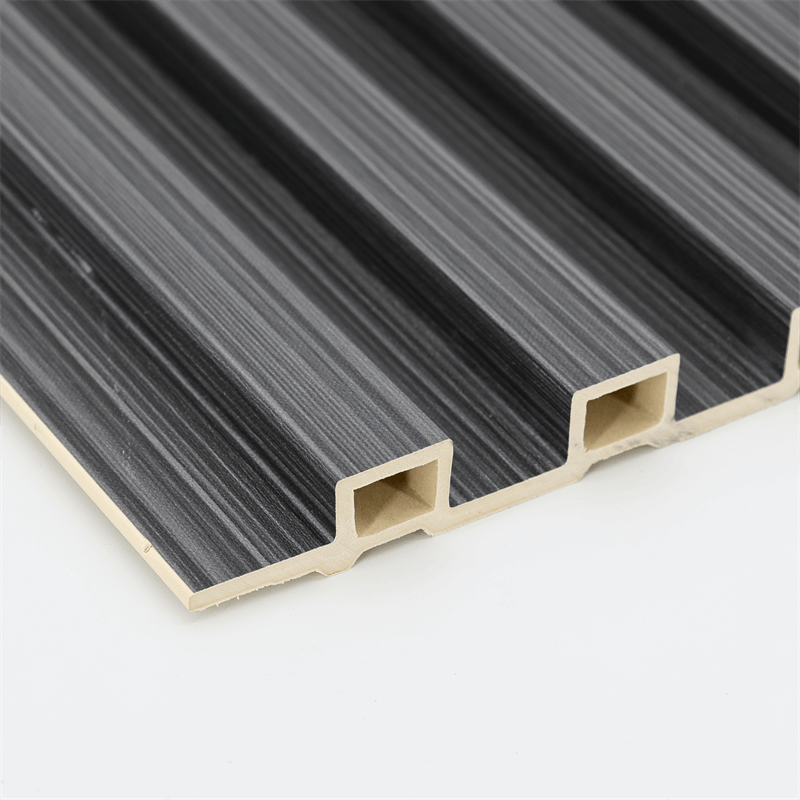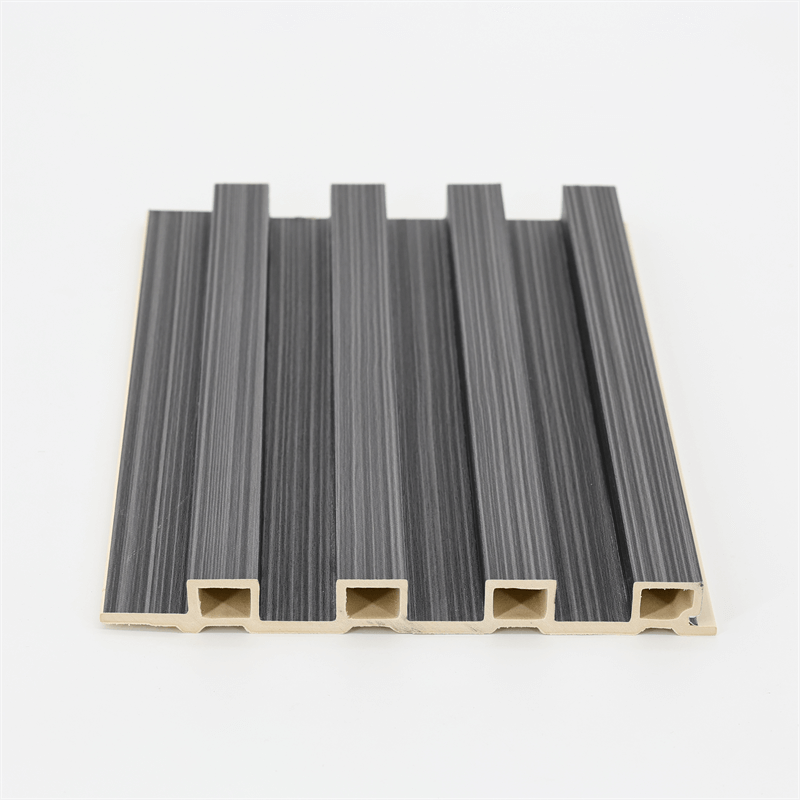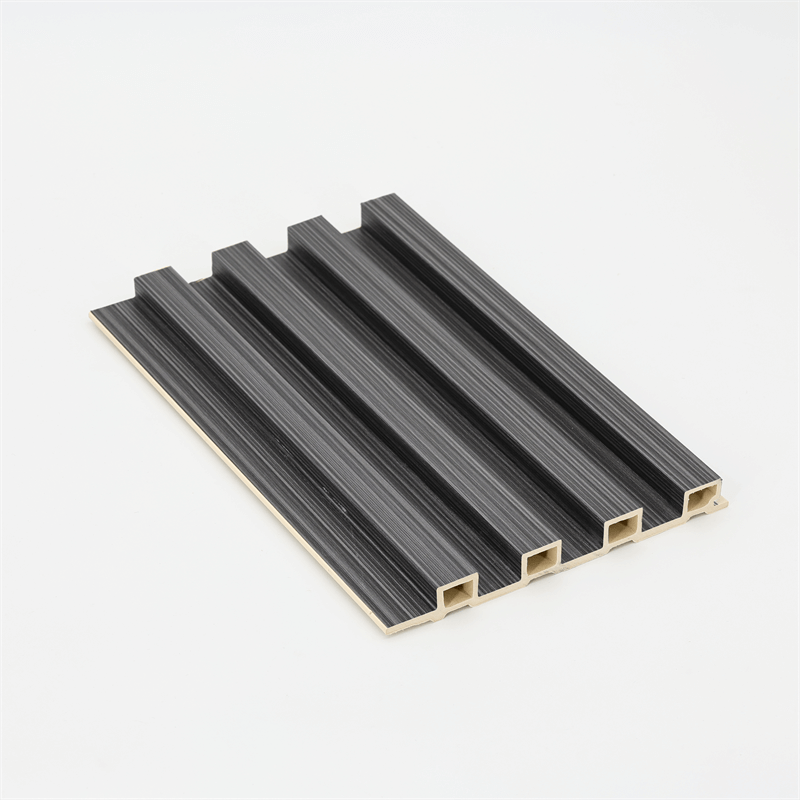As the world increasingly recognizes the importance of sustainable living, the design and construction industry has witnessed a shift towards eco-friendly materials and practices.
Wood-plastic composite (WPC) wall panels have emerged as a sustainable design solution, offering a range of environmental benefits.
This essay explores the concept of sustainable living with WPC wall panels, focusing on four key aspects: renewable materials, reduced environmental impact, energy efficiency, and indoor air quality.
I. Renewable Materials:
One of the fundamental principles of sustainable living is the use of renewable materials that minimize the depletion of natural resources.
WPC wall panels are composed of a combination of wood fibers and recycled plastic, utilizing materials that would otherwise go to waste.
The wood fibers used in WPC panels are often sourced from sustainable forestry practices, where trees are harvested responsibly and replanted.
By opting for WPC wall panels, architects and designers contribute to the preservation of forests and reduce the dependence on virgin timber.
Additionally, the utilization of recycled plastic in WPC panels helps divert plastic waste from landfills and oceans, promoting a circular economy.
By incorporating recycled materials into the manufacturing process, WPC wall panels reduce the environmental impact associated with the extraction and production of new plastic.
II. Reduced Environmental Impact:
WPC wall panels offer several advantages that contribute to a reduced environmental impact throughout their lifecycle.
Compared to traditional materials, such as solid wood or concrete, WPC panels have a lower carbon footprint and require fewer resources to manufacture.
The production process of WPC panels consumes less energy and emits fewer greenhouse gases.
This reduced energy consumption translates into lower carbon emissions, making WPC panels a more environmentally friendly choice.
Furthermore, WPC panels have a longer lifespan and require less frequent replacement compared to traditional materials.
Their durability and resistance to rot, decay, and pests contribute to less waste generation and a reduced demand for new construction materials.
By minimizing waste and extending the lifespan of building components, WPC wall panels promote a sustainable approach to construction.
III. Energy Efficiency:
Energy efficiency is a crucial aspect of sustainable living, and WPC wall panels can contribute to reducing energy consumption in buildings.
The insulation properties of WPC panels help regulate indoor temperatures, reducing the reliance on heating and cooling systems.
WPC panels provide effective thermal insulation, preventing heat transfer through walls and minimizing energy losses.
This translates into lower energy bills, reduced carbon emissions, and a more comfortable indoor environment.
Moreover, the lightweight nature of WPC panels simplifies transportation and installation processes, further reducing energy consumption and associated environmental impacts.
IV. Indoor Air Quality:
Indoor air quality is a significant concern for sustainable living. Poor air quality can have detrimental effects on occupant health and well-being.
WPC wall panels offer advantages in terms of indoor air quality compared to traditional materials.
Unlike certain wood products that may release harmful volatile organic compounds (VOCs), WPC panels are generally low in VOC emissions.
This means that WPC wall panels contribute to a healthier indoor environment by minimizing the presence of potentially harmful substances.
Furthermore, WPC panels are resistant to moisture, which reduces the likelihood of mold and mildew growth.
This aspect contributes to maintaining a cleaner and healthier indoor space, promoting sustainable living and occupant well-being.
WPC wall panels offer a sustainable design solution for eco-conscious living.
By utilizing renewable materials, minimizing environmental impact, promoting energy efficiency, and ensuring good indoor air quality, WPC panels align with the principles of sustainable living.
Architects, designers, and homeowners can embrace WPC wall panels as a versatile and eco-friendly alternative to traditional construction materials.
By integrating sustainable design practices into our built environment, we can create a more environmentally responsible and healthier future for generations to come.
Sustainable living with WPC wall panels not only benefits the environment but also contributes to creating a more resilient and responsible society.
The adoption of these eco-friendly design solutions promotes a shift towards a greener and more sustainable future.
In addition to the environmental advantages, WPC wall panels also offer aesthetic versatility, allowing for creative expression and design freedom.
They are available in a wide range of colors, textures, and finishes, providing architects and designers with the flexibility to create visually appealing spaces that align with sustainable principles.

Furthermore, the durability and low-maintenance nature of WPC wall panels contribute to long-term sustainability.
Their resistance to rot, pests, and moisture ensures that they maintain their structural integrity and aesthetic appeal over time.
This reduces the need for frequent replacements and minimizes waste generation, ultimately reducing the overall environmental impact of a building.
The use of WPC wall panels in sustainable design also aligns with green building certifications and rating systems.
Many of these certifications, such as LEED (Leadership in Energy and Environmental Design), emphasize the importance of utilizing sustainable materials and implementing energy-efficient design strategies.
By incorporating WPC panels into building projects, architects and designers can earn points towards achieving these certifications, further validating their commitment to sustainable living.
Education and awareness play a crucial role in promoting sustainable living with WPC wall panels.
Architects, designers, and homeowners should stay informed about the latest advancements and innovations in eco-friendly materials and design practices.
This knowledge enables informed decision-making and empowers individuals to make sustainable choices that benefit both the environment and their well-being.
Government incentives and regulations also play a significant role in encouraging the adoption of sustainable design solutions.
Governments can provide financial incentives, tax breaks, or grants for projects that prioritize sustainable materials and practices.
Additionally, implementing building codes and regulations that require the use of eco-friendly materials can further drive the demand for sustainable products like WPC wall panels.
Collaboration among different stakeholders is vital for the widespread adoption of sustainable design practices.
Architects, builders, manufacturers, and homeowners should work together to create a sustainable ecosystem that supports the use of WPC wall panels and other eco-friendly solutions.
This collaboration can involve sharing knowledge, conducting research, and supporting initiatives that promote sustainable living.
In conclusion, sustainable living with WPC wall panels offers numerous benefits for both the environment and society.
By utilizing renewable materials, minimizing environmental impact, promoting energy efficiency, and ensuring good indoor air quality, WPC panels contribute to a greener and more sustainable future.
Architects, designers, and homeowners have the opportunity to make a positive impact by embracing these eco-friendly design solutions.
Through education, awareness, government support, and collaboration, we can create a built environment that prioritizes sustainability and improves the quality of life for current and future generations.
Sustainable living with WPC wall panels is not just a trend but a conscious choice towards a better and more sustainable world.


